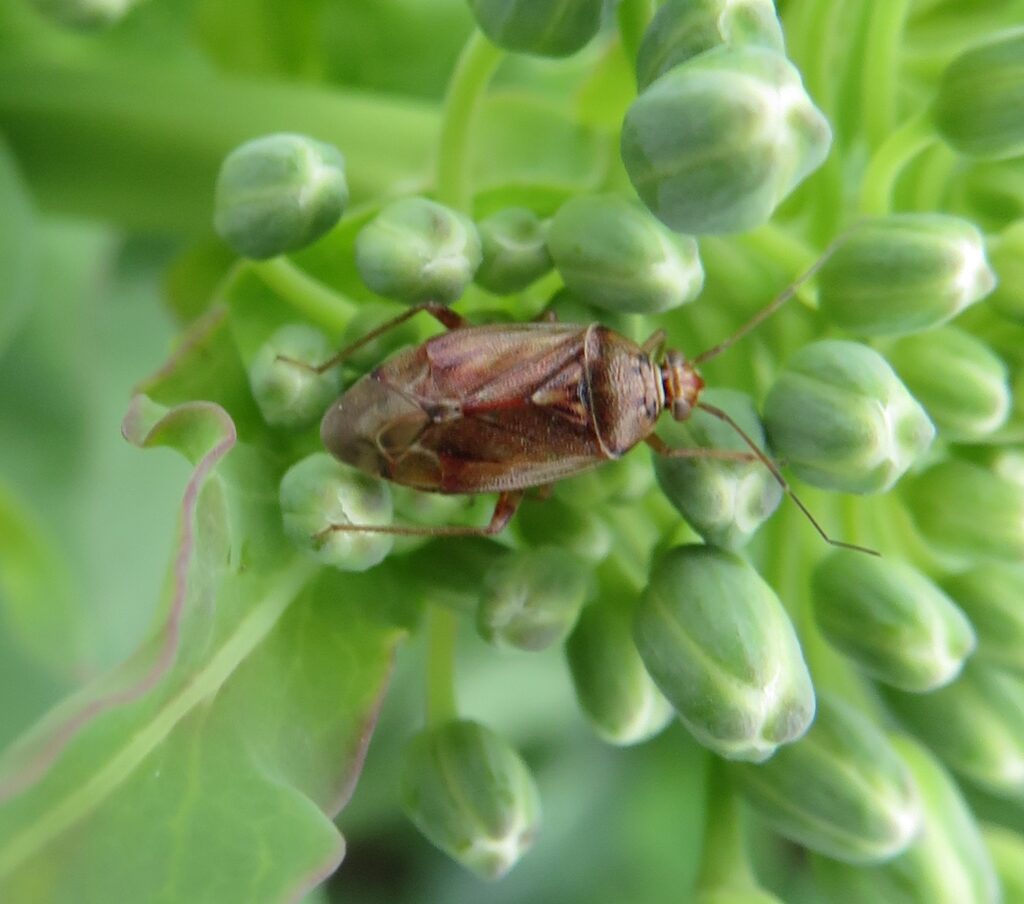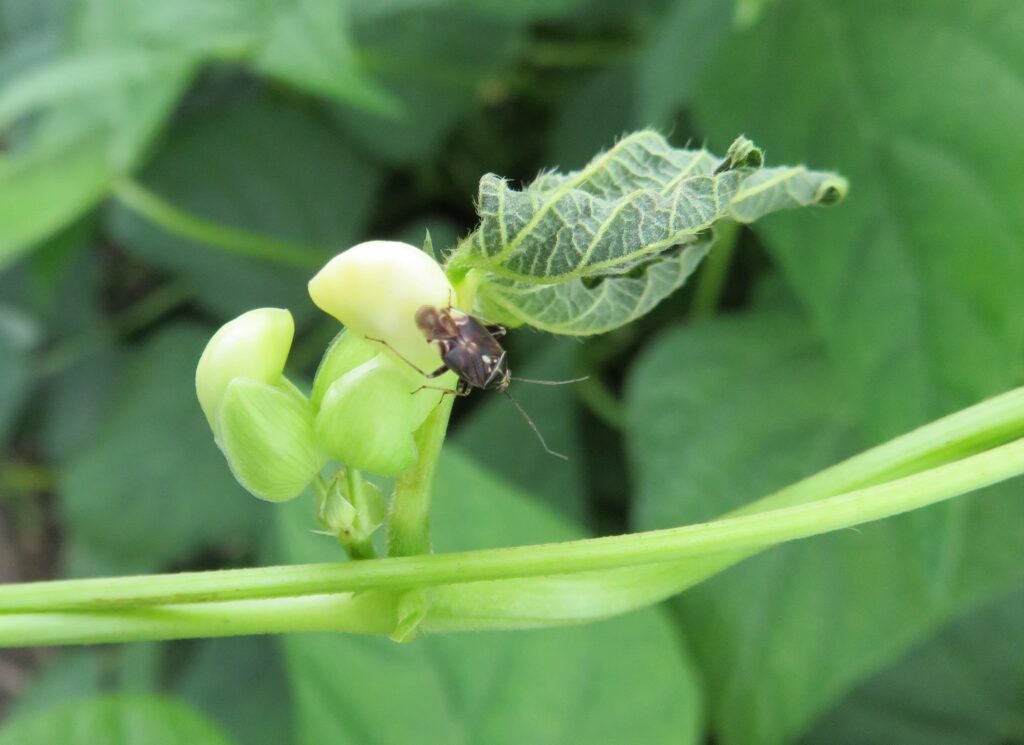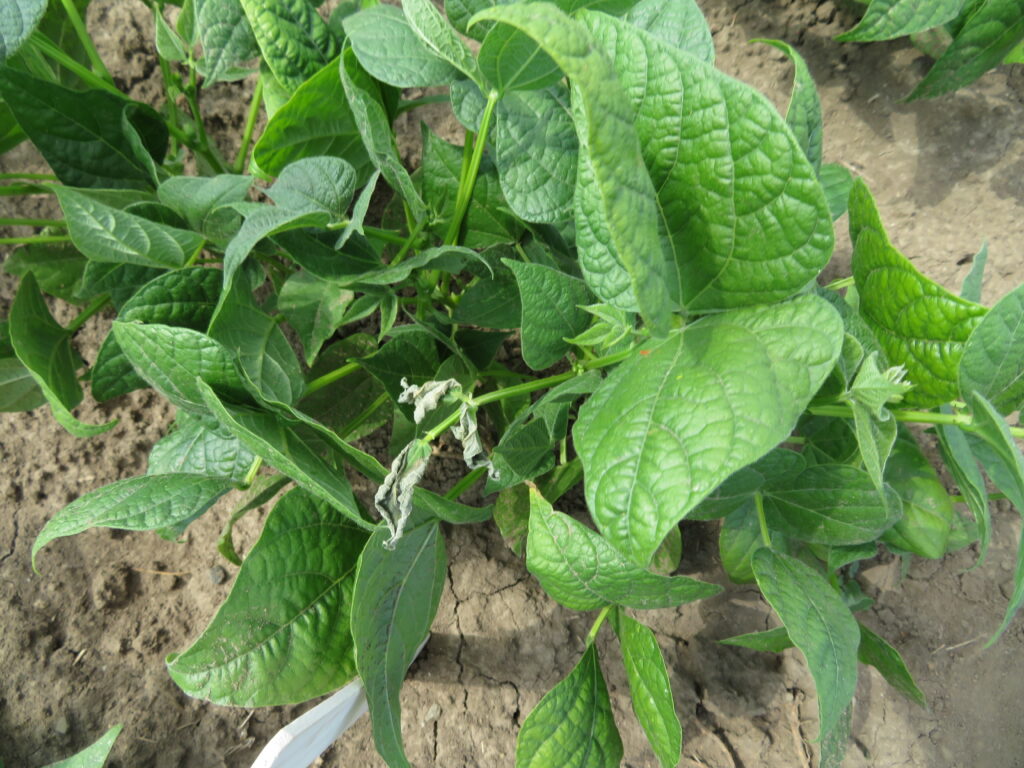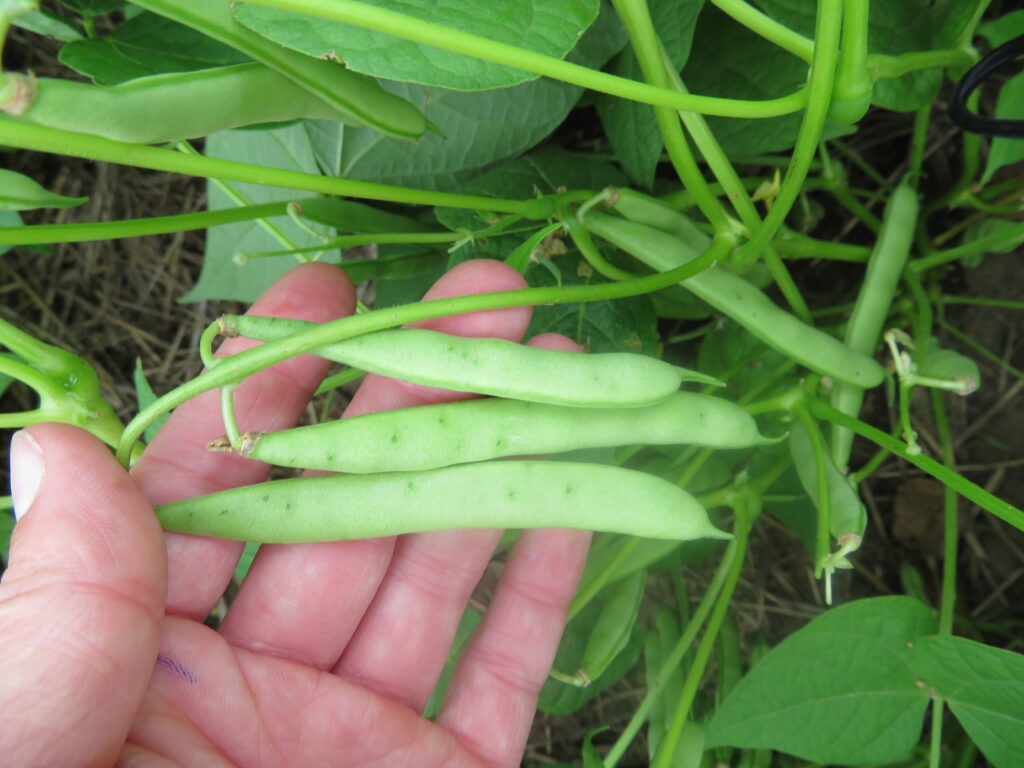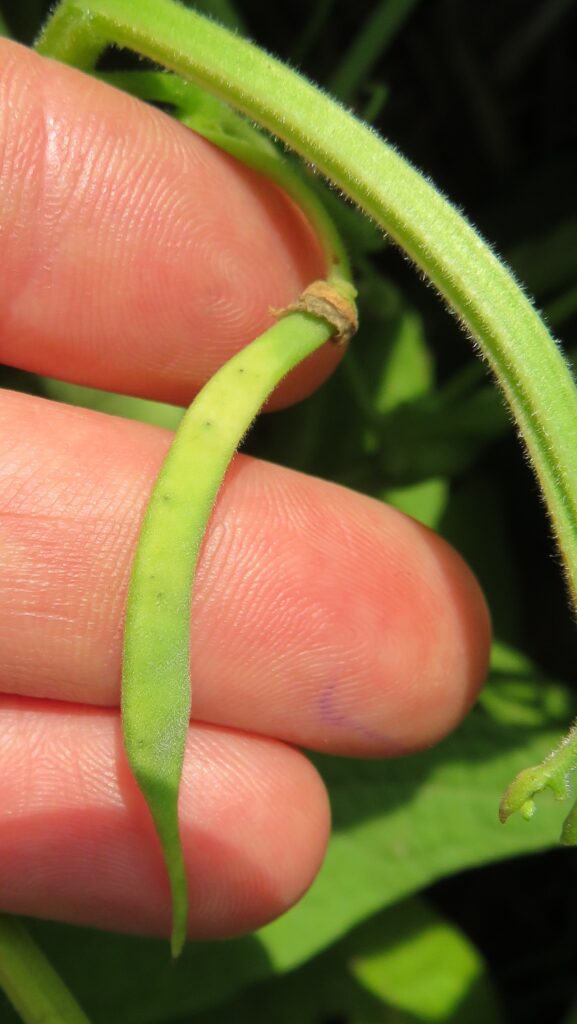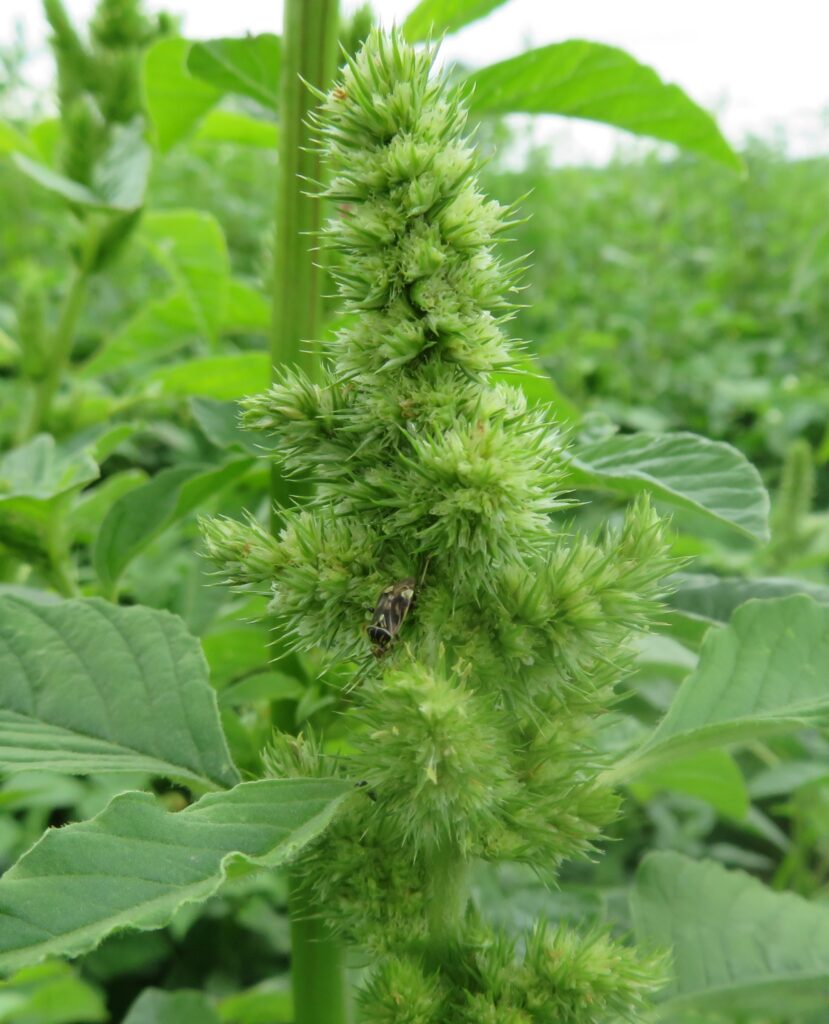Tarnished Plant Bug (Lygus lineolaris)
Description
Tarnished plant bug (TPB) adults are approximately 5 mm (0.2 in.) in length, mottled, yellowish-to-reddish-brown in colour and have a small triangle shape on their back. The nymph stage does not resemble the adults but can be misidentifed as aphids, although they lack the cornicles (“tailpipes”) that aphids possess. Nymphs are yellowish-green, wingless and lack the distinctive triangle-shape on their back. Older nymphs develop four small black dots on the thorax and one on the abdomen.
Life Cycle
Several generations occur within the summer although it is usually the later generations that enter the dry edible bean crop once other host crops are no longer suitable for feeding. TPB have several host crops but tend to move into canola and dry edible beans when alfalfa is being cut. They overwinter as adults in the leaf litter and plant debris within felds, woodlots, fencerows and ditch banks. Once temperatures warm up, adults migrate to other host crops to feed and lay eggs.
Damage
The adults and later stages of nymphs are the more damaging stages. TPB have piercing-sucking mouthparts that they use to pierce into the plant tissue and inject saliva that breaks down some of the plant tissue. Feeding on the upper stem may cause the top trifoliate to wilt; this can be caused by a few different insects but is likely caused by TPB if they are present. Feeding on fowers or pin pods can cause abortion. Feeding during pod stages results in scarring, malformation and dimpling or pitting of the pods. Sap may ooze from the feeding sites on the pods, which increases the risk of pod disease development. TPB can also drill directly into the seed, causing pick and reducing seed quality.
Conditions that Increase Risk
TPB tend to be more prevalent in hot, dry years. Fields that border other host crops are at higher at risk, especially when alfalfa/ forages have been cut.
Scouting
Monitor felds weekly during the early-pod and seed-flling stages. Monitor intensely after neighbouring alfalfa felds have been cut. Take 20 sweeps in a 180° arc in 5 areas of the feld, to determine the average number of adults and nymphs per sweep. TPB prefer pigweed in flower, so pigweed can be monitored to help indicate when TPB are present in and around the feld. Border rows are apt to have higher populations.
Threshold
A treatment may be required when an average of one to two tarnished plant bugs (nymphs or adults) per sweep is found during the pod stages.
Management Strategies
- Several parasitic wasps help control TPB and are negatively impacted by insecticides. Use a foliar insecticide only when threshold has been reached.
- Control weeds, particularly pigweed, which can attract TPB to the feld.
